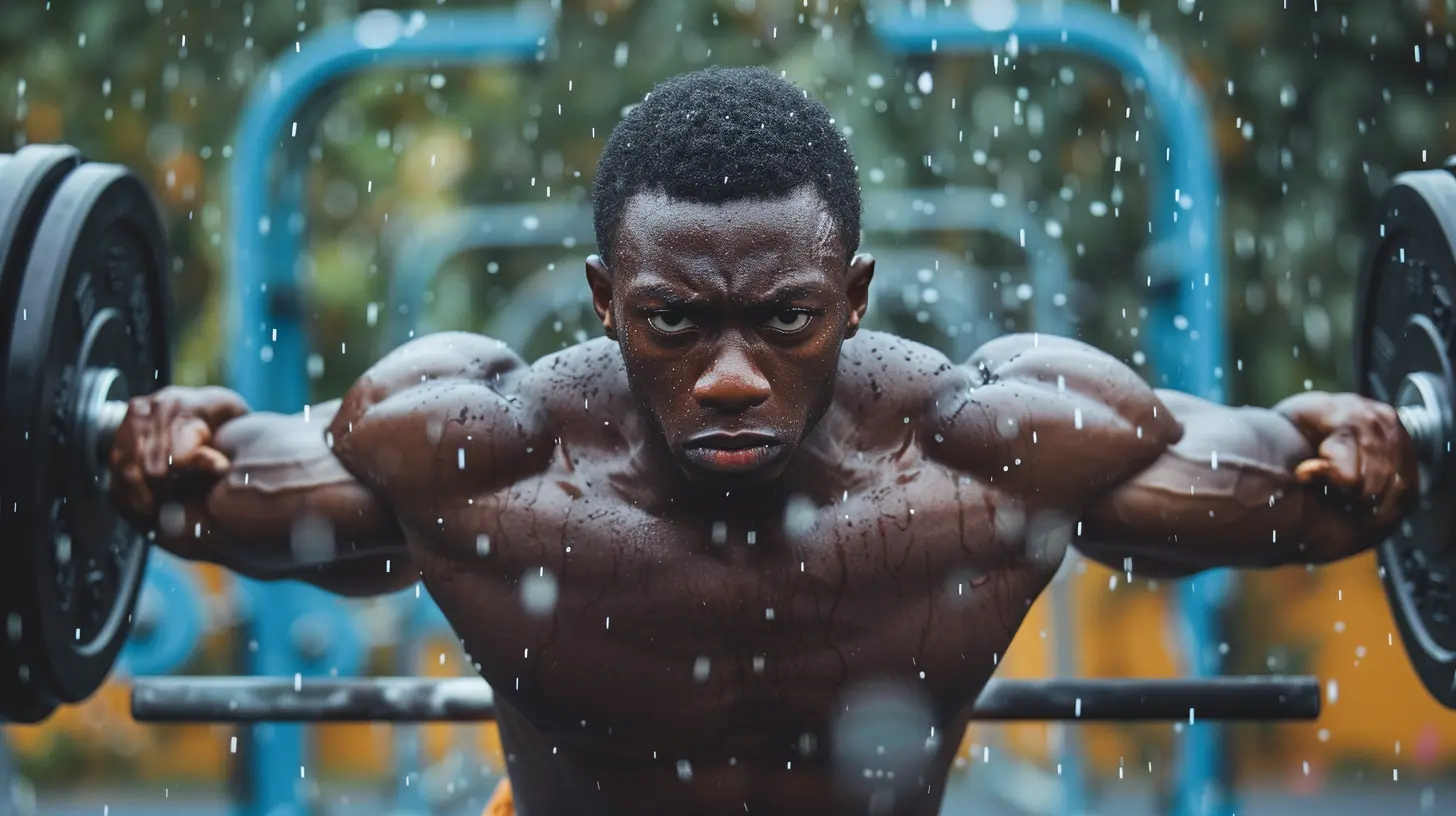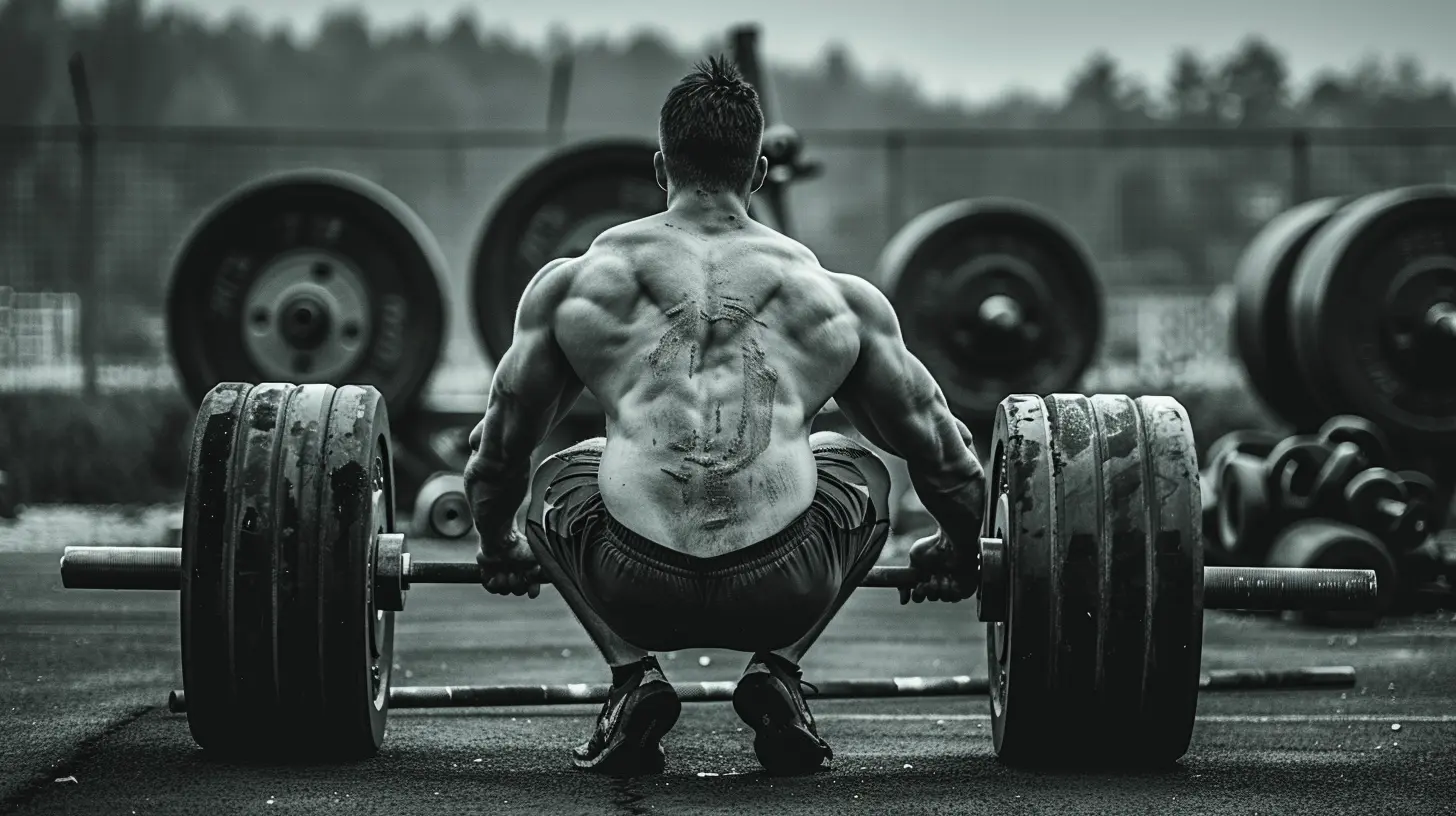How Strength Training Boosts Athletic Performance
5 September 2025
Let’s face it—when many people think of athletes, they picture someone sprinting across a field, swishing a game-winning shot, or pulling off gravity-defying flips. And sure, all that speed and finesse looks impressive. But here’s a little secret the highlight reels forget to show you: much of that magic starts… in the weight room. Yep, those not-so-glamorous squats, deadlifts, and push presses? They're the real MVPs.
So grab your protein shake, summon your inner gym rat, and let’s break down just how strength training boosts athletic performance. Spoiler alert: It's not just about looking jacked in a tank top.
"Strength Training? But I'm Not a Bodybuilder!"
Okay, let’s squash this myth right away. If you think strength training is all about bulking up until you can't fit through doorways—you're watching too many 90s action movies.Strength training isn’t just about aesthetics or walking sideways through tight spaces. It’s the not-so-flashy engine that powers those jaw-dropping sports moments. Whether you’re a sprinter, swimmer, soccer player, or pickleball enthusiast (yep, that’s a thing), adding some resistance training to your routine is like upgrading your body’s operating system.
Would you drive a race car with a lawn mower engine? Exactly.
1. Power: The Art of Exploding Like a Human Firework
Let’s talk about power. Not the evil-villain world-domination kind, but the kind that lets athletes go from 0 to 100 real quick.Power is the holy union of strength and speed. Think of a tennis serve, a football hit, or a basketball jump shot—each one delivers a split-second burst of controlled fury. And you know what builds that fury? Ding-ding-ding: strength training, baby.
🔑 Weightlifting exercises like power cleans, squats, and kettlebell swings train your muscles to contract explosively. The more you train fast-twitch muscle fibers, the better your body gets at producing power on demand.
It’s like upgrading from dial-up internet to Wi-Fi 6. You’re not just strong—you’re dangerously quick about it.
2. Injury Prevention: Because Benched Is Not a Vibe
Nothing kills momentum like an injury. One minute you're chasing your personal best, and the next, you're making a tragic cameo in your physio's Instagram story.Strength training builds resilient muscles, tendons, and ligaments. It reinforces your joints like armor and teaches your body how to move properly under stress—not just on the field, but in real life too.
➡️ Strong hamstrings? Say goodbye to pulling up mid-sprint like you’re in a dramatic movie scene.
➡️ Stable core? You’re less likely to twist your spine into a pretzel every time you pivot sharply.
Plus, a properly trained athlete is a body-aware athlete. You’re not flopping around like a wet noodle—you’ve got control, coordination, and confidence.
3. Improved Endurance: Yes, Lifting Helps You Run Longer
Wait, hold up. Isn’t endurance all about cardio?Well, yes and no.
While endurance training primarily improves cardiovascular health, strength training actually complements it in some sneaky and glorious ways. Picture this: each stride a runner takes or each pedal stroke a cyclist powers through—that requires muscle contractions. Stronger muscles = less effort per rep = less fatigue.
It's like giving your muscles a motivational speech that actually works.
Also, when your muscles are stronger, your running economy improves. Translation: you burn less energy to go the same distance. It's like switching from guzzling gas to sipping it like a hybrid car. Not too shabby, huh?
4. Faster Recovery: Be the Phoenix, Not the Mummy
Raise your hand if you love waking up sore—and not the “I did something productive” sore. I’m talking about the can’t-lift-my-arms-much-less-a-burrito kind.Strength training actually helps speed up recovery thanks to better blood flow, increased muscle efficiency, and reduced muscle imbalances. Plus, it teaches your body how to handle physical stress like a boss.
So instead of waddling like a penguin between matches, you’ll bounce back like a rubber band. Take that, lactic acid.
5. Better Movement Mechanics: AKA “Not Falling on Your Face”
Ever watch someone run and think, “That doesn’t look quite... right”?Faulty movement mechanics are a one-way ticket to Injury Town. Strength training, especially when it includes functional movements and unilateral work (hello, single-leg squats), improves your coordination and proprioception (that’s a fancy word for body awareness).
You develop better posture, balance, and alignment. Whether it’s cutting across the field or nailing that gymnastics landing, your movement becomes smooth, efficient, and dare I say—graceful.
It’s like turning a rusty tricycle into a well-oiled BMX stunt machine.
6. Mental Toughness: Because Your Brain Lifts Too
You think it’s just your biceps doing the heavy lifting in the gym? Think again.Strength training doesn't just build physical strength—it hammers out grit. Pushing through that final rep, hitting a personal record, or choosing the gym over another Netflix binge—all of that builds mental resilience.
And guess what? That kind of mental steel transfers beautifully into competition. When things get tough during a match or race, your brain doesn’t panic—it says, “Been here, lifted that.”
Strength training is the gym version of building calluses on your brain.
7. Body Composition: Leaner, Meaner, Sportier Machine
Here’s the tea: Fat doesn’t power performance—muscle does. And lucky for you, strength training helps you pack on the good stuff while shedding the not-so-helpful fluff.More muscle = a higher resting metabolism, which means you burn more calories at rest. Even couch potato hours become mildly productive. Amazing, right?
Plus, an improved body composition often translates into better mobility, quicker reaction times, and less load on your joints.
No one’s saying you need to look like a fitness model, but being leaner often means being quicker, lighter, and more efficient. Your uniform might even fit better too.
8. Sport-Specific Gains: Tailored Like a Suit, Not Baggy Pajamas
One of the beautiful things about strength training? It can be customized to your sport like a playlist curated by Spotify's algorithm.🎾 Tennis player? Focus on rotational core strength and shoulder stability.
🏀 Basketball player? Prioritize explosive lower-body power for those vertical leaps.
🚴 Cyclist? Enhance leg endurance and hip strength.
This isn’t random, cookie-cutter lifting. It's performance precision—kind of like programming cheat codes into your body.
You’re not just lifting for the sake of it. You’re lifting to win.
Tips for Athletes New to Strength Training (So You Don’t Break Yourself)
Let’s be real—you’re excited, maybe even a bit too excited. But before you Hulk-smash your way into the weight room, here are some pointers to keep your body intact and your ego in check:- 🧠 Hire a coach or trainer who understands sports performance. Your uncle who “did some lifting in high school” does not count.
- 🏃♂️ Warm up, please. Your muscles deserve a little foreplay before going hard.
- 🔁 Focus on proper form. Ego lifting is a one-way street to Snap City.
- 🧘♂️ Balance your training with mobility work. Don’t be that guy who can deadlift 400 pounds but can’t touch his toes.
- 😴 Rest like a pro. Recovery isn’t lazy—it’s strategic.
Strength Training Isn’t Optional—It’s Foundational
At this point, if you’re still thinking of strength training as an optional side dish instead of the main course, I have bad news: You're missing out. Big time.From explosive power to ironclad joints, from mental toughness to metabolic boosts—strength training is the sports performance cocktail that does it all. Sure, it doesn’t come with a crowd or a scoreboard, but every PR you hit in the gym becomes a brighter light on the field.
So next time someone tells you lifting's just for bodybuilders, smile politely... right before you out-sprint, out-jump, or out-hustle them.
Because now you know the truth: Behind every great athlete is a barbell begging to be lifted.
all images in this post were generated using AI tools
Category:
Strength TrainingAuthor:

Everett Davis
Discussion
rate this article
1 comments
Yazmin Burton
Strength training is foundational for athletic performance, enhancing not only muscular power but also endurance and injury resilience. By increasing muscle mass and improving neuromuscular coordination, athletes can achieve greater efficiency in their movements, translating to improved performance across various sports disciplines.
September 17, 2025 at 3:38 AM

Everett Davis
Absolutely! Strength training is essential for athletes, as it builds muscle, enhances coordination, and boosts overall performance while reducing injury risk.


